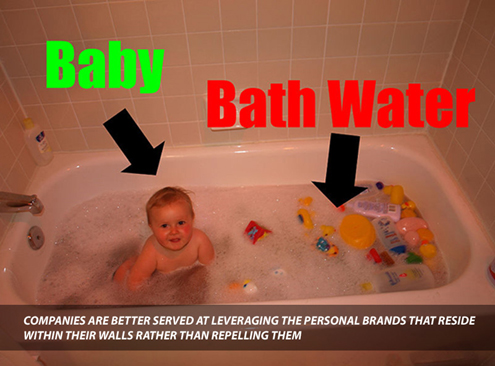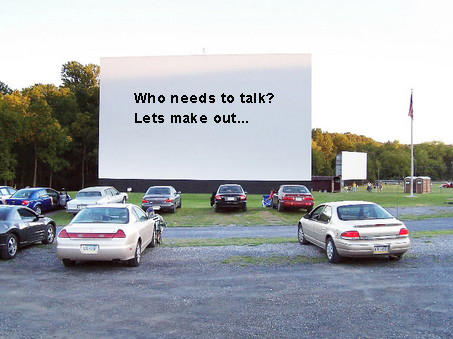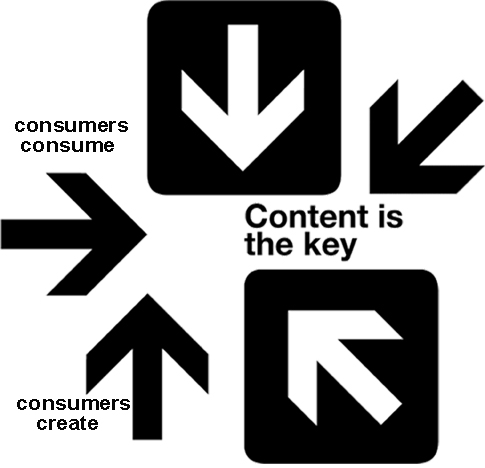 If you want to purchase an accounting system, customer relationship manager (CRM) or enterprise resource planning (ERP) platform for your company, it’s a pretty established process. There are a few meaningful vendors in your space determined by the size of your company, the features are all pretty clear and there are case studies galor for how-to and how-not-to select, implement and run those systems. Now, if you want to source some external help for social media, well that’s a different story.
If you want to purchase an accounting system, customer relationship manager (CRM) or enterprise resource planning (ERP) platform for your company, it’s a pretty established process. There are a few meaningful vendors in your space determined by the size of your company, the features are all pretty clear and there are case studies galor for how-to and how-not-to select, implement and run those systems. Now, if you want to source some external help for social media, well that’s a different story.
We hear how everyone is a social media expert whether they’re certified or self-proclaimed. You can find people who believe many are akin to snake-oil salesmen and of little use. But if you are a company who needs external help, how do you weed through this entirely new industry? That is the point of this post, to effectively source external software and/or services to help deliver on your social media initiatives.
The industry is growing by the day: Agencies (traditional, interactive, digital, public relations, etc), Consultants (individual or small teams), web-development (SEO, measurement, advertising, now with social elements), Software Vendors, Service Vendors and you could continue to sector this list ad nauseum. All of these different components all have varied levels of experience whether personal or corporate and varied levels of perceived successes. Wading through all this fluff to get to someone who can meet your specific needs is difficult at best. One of the most proven methods of sourcing external suppliers is through a Request For Proposal process or RFP. As stated in Wikipedia, an RFP is:
“is an invitation for suppliers, often through a bidding process, to submit a proposal on a specific commodity or service. A bidding process is one of the best methods for leveraging a company’s negotiating ability and purchasing power with suppliers. The RFP process brings structure to the procurement decision and allows the risks and benefits to be identified clearly upfront.”
Where to Start? There is a widely accepted order by which to initiate and execute a typical RFP.
- Establish Criteria for Evaluation: “If you don’t know where you are going, any road will get you there” ~ Alice in Wonderland. Two key things here: 1) pull together a cross-functional team to develop criteria. this gets broader input and incorporates all departments from the start which will make ultimate buy-in that much easier. 2) evaluate your needs and develop criteria that would best meet those needs.
- Vendor Research: Once you have identified the criteria by which to evaluate, begin to research which vendors may fit (large agencies, small consultants, big integrators, small off-the-shelf, etc) and develop a preliminary list.
- Request For Information (RFI) or Request For Qualifications (RFQ): Some will say this step is not necessary or that it drags out the entire process too long. I tend to disagree however as it allows you to understand the market better and, done correctly, will provide additional direction for your RFP. From the RFI, you can eliminate roughly half of the prospective vendors on you list.
- Develop and Send the RFP: Here are 2 RFP Templates to consider Sample Social Media Template from Social Media Group and Sample Unbranded SEO RFP. Possible organization by Purpose/Goals, Criteria, Timelines, Vendor Questions / Responses, initial cost estimates. The RFP should convey what you are looking to accomplish, the criteria by which you will measure, the expected timelines, additional capabilities and cost estimates. This will elicit consistent responses by which to evaluate and rank the responses.
- Review the Responses: taking into account the criteria, evaluate the best responses by committee (remember the more input along the way, the easier the buy-in at the end) and narrow down to a top three (or simply choose a winner – see the next bullet for why not to do this)
- Interview the top 3 responses: At this point, you notify the vendors they have either made it to the finals or they have been eliminated from consideration. By having this process, you maintain the most negotiating leverage. During this phase, you can narrow the scope, interview vendors and negotiate final costs. If vendors know they are still competing, they will continue to put the best package together that they can offer. If you wait to negotiate pricing after you award a final vendor, the negotiating leverage moves to the vendor.
- Make a Selection:this speaks for itself. Remember to organize timelines and accountability from both sides to make sure everyone knows who’s responsible for what during the installation process.
Now this is a traditional process and for the most part I would follow this procedurally. My one hesitation is actually in developing social media criteria, companies will typically lump technology, strategy development, execution, community management, SEO, advertising purchasing, etc into one big project labelled “Social Media Initiative”. Personally, there is not one company let alone person who could pull this entire project off. My recommendation then, is to create sections of the RFP and allow vendors to submit responses only for those areas where they are strong or to actually create 3-4 separate RFP processes which most companies are not equipped to pull off. Let us know in the comments if there is a better process that you have encountered.
While this is a good start, it does not provide the nuanced detail needed to truly start this process for your own company. For this, we bring in the creator of the Social Media RFP and top strategist Maggie Fox. Maggie and her team at the Social Media Group work with companies like Ford Motor and SAP to deliver social media solutions. She will moderate this week’s session and help us all prepare to source external suppliers to help meet our social media needs. This week’s topic and specific questions include:
Topic: The Social Media RFP: How to Get the Best Results
Q1: How do you formulate a proper RFP that conveys your social media goals?
Q2: How do you identify the vendors, consultants or agencies to send your RFP to?
Q3: How do you evaluate your responses to pick the best solution?
Please join us this week as Maggie Fox moderates our Tuesday #socialmedia chat at noon EST. You can follow along by watching #sm43 from any twitter client or simply from our LIVE page.










 It is not often that a technology comes along and changes the world. That is the case with Twitter. Started in 2006 by Jack Dorsey,
It is not often that a technology comes along and changes the world. That is the case with Twitter. Started in 2006 by Jack Dorsey, 
 If you want to purchase an accounting system, customer relationship manager (CRM) or enterprise resource planning (ERP) platform for your company, it’s a pretty established process. There are a few meaningful vendors in your space determined by the size of your company, the features are all pretty clear and there are case studies galor for how-to and how-not-to select, implement and run those systems. Now, if you want to source some external help for social media, well that’s a different story.
If you want to purchase an accounting system, customer relationship manager (CRM) or enterprise resource planning (ERP) platform for your company, it’s a pretty established process. There are a few meaningful vendors in your space determined by the size of your company, the features are all pretty clear and there are case studies galor for how-to and how-not-to select, implement and run those systems. Now, if you want to source some external help for social media, well that’s a different story.


